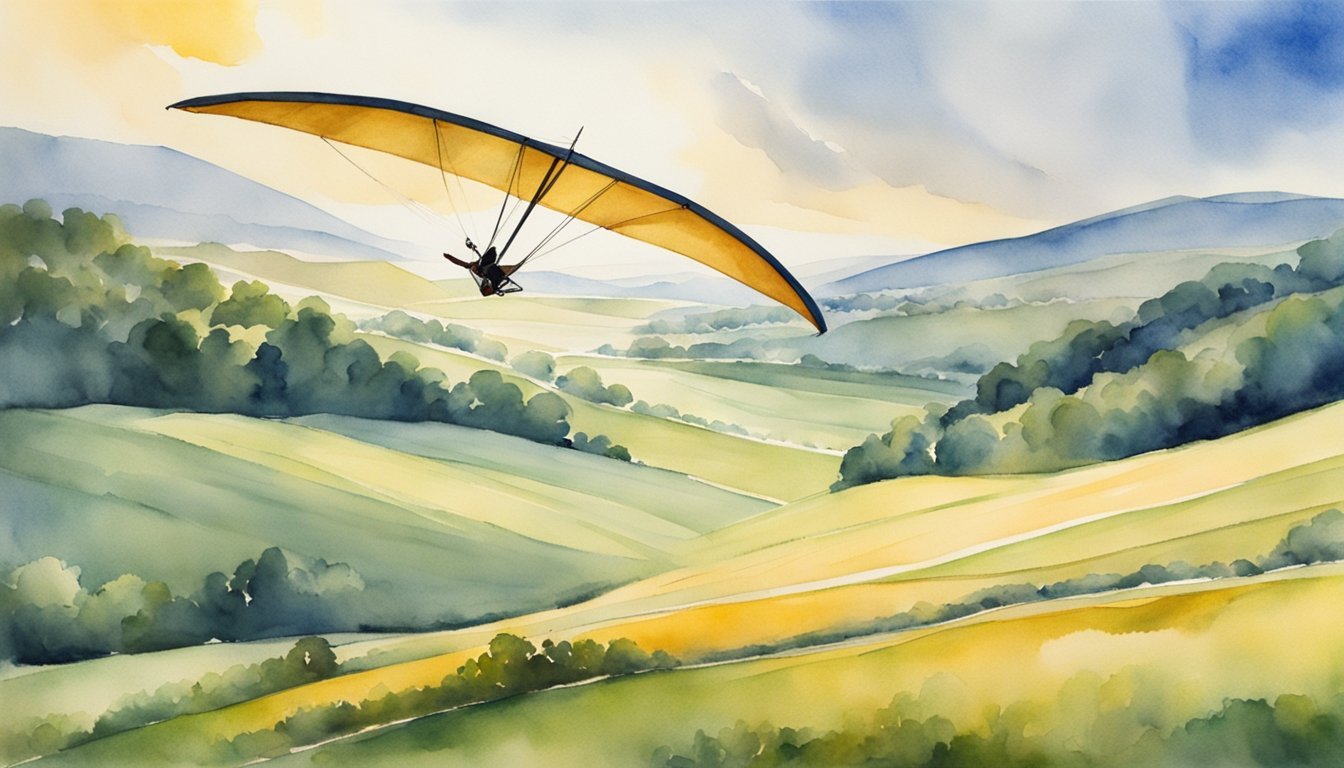Understanding Hang Gliding
Hang gliding is an air sport that blends the thrill of flight with the elegance of sailing through the skies. It requires a combination of lightweight equipment and an understanding of aerodynamics to glide with the currents of the air.
History and Evolution
Hang gliding has its roots in the late 19th century with pioneers like Otto Lilienthal who engineered and piloted the first controllable gliders. Figures such as Octave Chanute contributed to gliding technology, and the development of the Rogallo wing in the 1950s by Francis Rogallo was crucial for modern hang gliders. This innovation led to the use of flexible, steerable wings that are now synonymous with the sport.
Equipment Essentials
Modern hang gliders consist of an aluminum or composite frame with a wing made from durable, light fabric. Key components of a hang glider kit include:
- Harness: Ensures the pilot is securely attached to the glider.
- Helmet: Provides essential head protection.
- Vario: Helps in detecting changes in vertical air movements.
- Glider: Comprises the wing and frame, designed for aerodynamic efficiency.
- Straps: Connect the harness and frame, crucial for maneuverability and control.
Basic Principles of Flight
Understanding how hang gliders work is integral to mastering the sport. A hang glider’s flight relies on three fundamental principles: lift, drag, and gravity. Pilots control their direction and speed by shifting their weight within the harness, which influences the glider’s center of gravity. Additionally, the crossed legs posture effects the pilot’s aerodynamics, potentially impacting stability and maneuverability during flight.
- Lift: Generated by the wing shape and air moving over the surface.
- Drag: The resistant force that must be overcome to maintain forward motion.
- Weight: The combined mass of the pilot and gear, which affects glide performance.
Safety Standards and Training
Safety is paramount in hang gliding. Pilots are typically required to undergo thorough training and receive certification from organizations like the United States Hang Gliding and Paragliding Association (USHPA). They learn emergency procedures, safety precautions, and effective handling of equipment. Helmets and harnesses must meet rigorous standards, and routine checks are vital to ensure the integrity of every component before takeoff.
Safety tips include:
- Always check weather conditions before a flight.
- Regularly inspect equipment for signs of wear or damage.
For more on the exciting world of hang gliding and its robust safety protocols, visit The Ultimate Guide to Hang Gliding: Everything You Need to Know.
Engaging in Hang Gliding

Hang gliding is a dynamic air sport that combines the skilled art of piloting with the natural forces of wind and lift. From the very first takeoff to mastering advanced techniques, hang gliding offers a range of experiences that echo the natural flight of birds.
Preparing for Your First Flight
Before a pilot can experience the freedom of gliding, there is important groundwork to be covered. This includes selecting a reputable hang gliding association or club which often offer training programs and mentorship to help beginners understand the basics of flight, and learning about the safety measures and weather conditions to look for. Equipment, especially the hang glider itself, which is a lightweight, non-motorized aircraft, needs to be in prime condition. Understanding how to harness your body weight for control during flight is paramount. For those in the United States, a wide variety of flying sites with different scenic views and atmospheric conditions are available.
Advanced Flying Techniques
As pilots gain experience, they often explore advanced techniques such as aerotowing, where the glider is towed aloft by a powered aircraft, or utilizing thermals, which are upward currents of warm air that can provide lift for extended flights. A pilot’s proficiency with these techniques can transform their experience, allowing for longer flights and even aerobatics. Such maneuvers are physically demanding and require a committed and dedicated approach to the sport.
Lifestyle and Community
Hang gliding is not just a recreational activity; it is an adventure sport that fosters a strong community of enthusiasts. Pilots often join clubs which serve as hubs for sharing knowledge and experiences. These communities organize events and gatherings that support the lifestyle, encouraging pilots to discover new flying sites and share in the joy of gliding. Regular engagement within the community can also elevate a pilot’s hang gliding experience, contributing to a sense of camaraderie and collective pursuit of this exhilarating sport.

